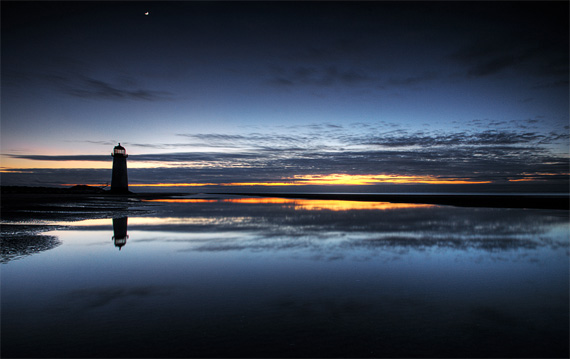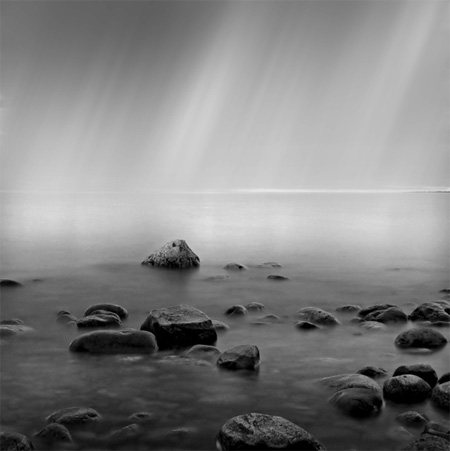To many people new to digital photography, just the words “manual mode” are enough to start their knees shaking nervously. Surely, one of the benefits of modern cameras is that much of the tough decision making is taken out of your hands so that you can concentrate on picture composition, and actually taking the shot? Whilst this is largely true, there will always be times when ultimate control should stay in the photographer’s hands—tricky lighting conditions, for example.
The information here is based on a Canon 450D, but will be similar for a Nikon or equivalent model. First, switch the Mode dial to M. The camera is now in full manual exposure mode. Scary huh? Not a bit! The main dial behind the shutter will now give you access to shutter speeds. Typically these range from Bulb setting (the shutter stays open for as long as you press it) to 30 seconds to 1/4000 of a second.
Let’s look at aperture. Using an 18-55mm IS lens the range is anything from f/3.5 (widest) to f/22 (smallest), varying with the amount of zoom being applied. Hold down the Av +/- button and rotate the main dial to change the aperture. You can refer to my previous beginners’ photography articles concerning aperture if you need to know more about this subject.
Checking exposure. The main point of using Manual Mode is that increased exposure, either through slower shutter speeds or larger aperture, results in brighter pictures. Conversely, less exposure makes darker images. To check the exposure level, lightly press the shutter, and read the exposure level indicator on the back of the camera. It will show as a linear reading from -2 to +2.
So, in what sort of situations will manual Mode help you out? If you are taking portraits, strong backlighting is sometimes used. You can adjust aperture and shutter speeds if the usual exposure compensation is not enough.
In a flash portrait scenario, you can set longer or shorter manual exposures to brighten or darken the background—the flash will adjust itself accordingly to give correct exposure to the subjects. And in night cityscapes, auto exposure can leave you with pitch darkness. Using apertures of f/8 or f/11 in manual mode should help—plus an exposure of about 10 seconds (note: a tripod is needed in this situation).
In manual mode, you have more influence on the resulting image, rather than relying on auto modes which can allow the camera to dictate and interpret a situation incorrectly. For beginners, photography should be about taking the chance to experiment, for it is here where you will ultimately learn what works and what doesn’t, in any given situation. After all, after reviewing your images, you can delete what you don’t like. When the images are safely on your computer, take time to review the shooting data of the files (images) that worked so you know what settings to select next time you use manual mode.
About the Author
Discover how easy it is to take memorable photographs simply by following a beginner’s photography course online. Please check out http://www.photographycourseonline.info for further information.
Like This Article?
Don't Miss The Next One!
Join over 100,000 photographers of all experience levels who receive our free photography tips and articles to stay current:








best article about manual, why? because you are the only one who did not imply that it is best to use it all the time, forgetting about certain situations and continuously moving lights. You give examples when they are best used, and you didn’t say it will teach you photography because in my opinion it does not teach you more than an AV or TV mode will teach you.. Using TV mode you still have to understand why you chose that value and same goes for AV mode. In all modes (not FULL Autos) you need to learn about photography, light,exposure, etc.
thank you for all of the great tips.